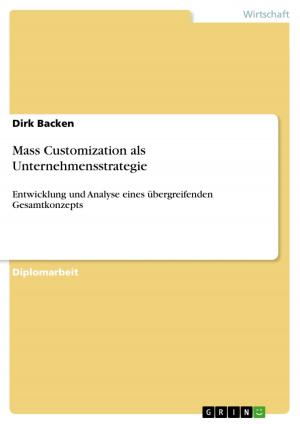The Maya Calendar Systems Vol. 1
Emphasizing the Yucatecan Calendar, the Worlds Very First Eternal Solar Calendar
Nonfiction, Social & Cultural Studies, Social Science, Anthropology| Author: | Armin A. Brandes | ISBN: | 9783668278943 |
| Publisher: | GRIN Verlag | Publication: | August 19, 2016 |
| Imprint: | GRIN Verlag | Language: | English |
| Author: | Armin A. Brandes |
| ISBN: | 9783668278943 |
| Publisher: | GRIN Verlag |
| Publication: | August 19, 2016 |
| Imprint: | GRIN Verlag |
| Language: | English |
Scientific Study from the year 2016 in the subject Ethnology / Cultural Anthropology, , language: English, abstract: This treatise about the Maya Calendar Systems, emphasizing the Yucatecan Calendar, is an extract and a summary of the studies on their number as well as their calendar systems. As far as the calendars are concerned data from monuments as well as from the Chilam Balam of Tizimin / Chumayel and the Codex Pérez were analyzed. All nations of Mesoamerica had number systems to the base 20. The one of the Maya, however, differed from all others not only by its basic numbers but also by the formation of numbers greater than 20, namely by the method of overcounting while all the others used the method of undercounting. The Maya replaced their moon calendar by adopting the spiritual and solar calendar as well as a longtime count by a now long time perished nation. The solar calendar had built in a correction of the first order, a camouflaged bissextile day at the end of every fourth year. Spiritual and solar calendar constituted by permutation the Calendar Round, a cycle of 52 years. One of the properties of the Calendar Round was that all years began cyclic by only four out of the twenty sacred day signs, the year bearers kaban, ik', manik', eb. The longtime count was noted as elapsed days in positional notation, whereby the third rank was counted only from 0 to 17. This Preclassic Calendar was reformed by the Maya due to the different counting of numbers, thus, by replacing the Day Count with a system of measurements, the so-called Long Count, whereby the third rank became a short year of 360 days. This Classic Calendar was reformed, however, only in the Rio Bec, Chenes and Puuc region. Hereby the Long Count was replaced by periods of current time, the ajaw-Periods of 20 short years. Additionally the Calendar Round was made 'dynamic', in order to integrate the solar calendar corrections of the second and third order. The resultant pairs of Calendar Rounds of the same patron had identical notations, thus, the protagonists of the reform introduced for the months of the solar year the count of current days for each first Calendar Round and for each second one of elapsed days. The reform of this Yucatecan Calendar was completed by enlarging the ajaw-Period from the 20 short years to 24 solar years. And thus, the first eternal solar calendar was accomplished. This calendar was lived up to the conquest by the Spaniards. The knowledge about it, however, was lost soon after the inquisitional trials and the auto de fé of Mani. Thereafter the counting was frozen.
Scientific Study from the year 2016 in the subject Ethnology / Cultural Anthropology, , language: English, abstract: This treatise about the Maya Calendar Systems, emphasizing the Yucatecan Calendar, is an extract and a summary of the studies on their number as well as their calendar systems. As far as the calendars are concerned data from monuments as well as from the Chilam Balam of Tizimin / Chumayel and the Codex Pérez were analyzed. All nations of Mesoamerica had number systems to the base 20. The one of the Maya, however, differed from all others not only by its basic numbers but also by the formation of numbers greater than 20, namely by the method of overcounting while all the others used the method of undercounting. The Maya replaced their moon calendar by adopting the spiritual and solar calendar as well as a longtime count by a now long time perished nation. The solar calendar had built in a correction of the first order, a camouflaged bissextile day at the end of every fourth year. Spiritual and solar calendar constituted by permutation the Calendar Round, a cycle of 52 years. One of the properties of the Calendar Round was that all years began cyclic by only four out of the twenty sacred day signs, the year bearers kaban, ik', manik', eb. The longtime count was noted as elapsed days in positional notation, whereby the third rank was counted only from 0 to 17. This Preclassic Calendar was reformed by the Maya due to the different counting of numbers, thus, by replacing the Day Count with a system of measurements, the so-called Long Count, whereby the third rank became a short year of 360 days. This Classic Calendar was reformed, however, only in the Rio Bec, Chenes and Puuc region. Hereby the Long Count was replaced by periods of current time, the ajaw-Periods of 20 short years. Additionally the Calendar Round was made 'dynamic', in order to integrate the solar calendar corrections of the second and third order. The resultant pairs of Calendar Rounds of the same patron had identical notations, thus, the protagonists of the reform introduced for the months of the solar year the count of current days for each first Calendar Round and for each second one of elapsed days. The reform of this Yucatecan Calendar was completed by enlarging the ajaw-Period from the 20 short years to 24 solar years. And thus, the first eternal solar calendar was accomplished. This calendar was lived up to the conquest by the Spaniards. The knowledge about it, however, was lost soon after the inquisitional trials and the auto de fé of Mani. Thereafter the counting was frozen.















